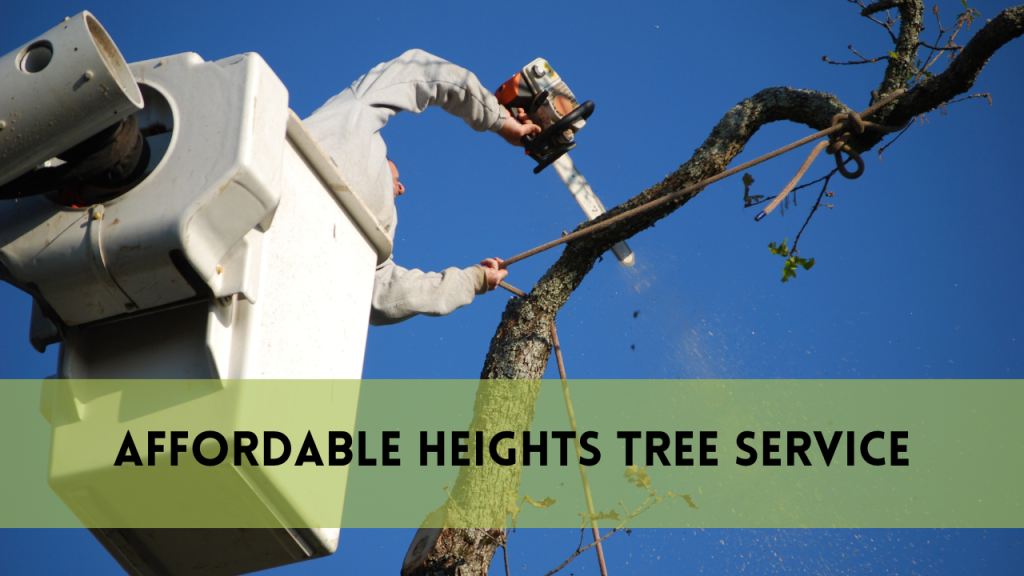What To Do With Uprooted Trees
When confronted with the aftermath of a violent storm, a sudden blast of wind, or even natural erosion, property owners are frequently left with the issue of what to do with uprooted trees. Uprooted trees can be a source of both anxiety and great opportunity. Their fate depends on a number of factors, including their condition, size, location, and the property owner’s goals. In this talk, we’ll look at the factors that go into deciding whether to replant these fallen giants or remove them. Each circumstance is unique, and understanding the subtleties of tree health, safety considerations, and long-term landscaping goals is critical to making an informed decision. In this blog you will Learn about what to do with uprooted trees?
How does a tree get uprooted?
Trees are uprooted mostly due to a mix of severe winds and specific circumstances connected to the tree’s traits and habitat. When a storm delivers high winds, the tree’s canopy functions like a sail, capturing the wind and exerting substantial strain on the tree’s structure. This force has the potential to break down the tree, especially if it has shallow or spreading root systems. Shallow roots provide insufficient anchorage, and when the soil becomes saturated with precipitation as a result of severe rains, its grasp on the tree weakens even more. In some circumstances, the age, health, or previous damage of the tree may contribute to its vulnerability. When the forces of wind, poor soil, and structural problems combine, they might overwhelm the tree’s stability, leading it to uproot and topple. As a result, a tree falls, typically causing harm to nearby property and vegetation.
Replanting Uprooted Trees:
Replanting removed trees can be a rewarding task if done correctly. It not only restores greenery to your landscape, but it also benefits the environment and can save you money on replacement prices. Here’s a step-by-step tutorial for replanting uprooted trees:
- Before replanting, assess the tree’s health. Look for damage to the trunk, branches, and roots. If the tree has been seriously damaged, replanting may not be possible, and removal may be a better alternative.
- Select a new planting place that has acceptable soil, proper drainage, and enough space for the tree to flourish. Check that it is free of obstacles and is not too close to structures or other trees.
- Dig a hole in the new place that is wider than the root ball and deep enough to support the tree’s roots without bending or crowding. The hole should be proportional to the size of the root ball.
- Gently remove the uprooted tree from its original site while preserving the root ball intact. During this operation, avoid causing additional damage to the roots.
- Place the tree in the prepared hole, making sure it is at the same depth as it was previously. The top of the root ball should be flush with the surrounding soil
- Carefully backfill the hole with soil, making sure to avoid any air pockets. Water the tree as you fill the hole to help the soil settle around the roots.
- If the tree is tall or top-heavy, stake it to provide stability. Apply a layer of mulch around the base of the tree to preserve moisture and prevent weeds, but avoid piling mulch up against the trunk.
- Water the tree thoroughly immediately after replanting, and keep the soil continuously moist but not saturated throughout the tree’s establishment phase. Pruning any damaged or broken branches will promote healthy growth.
- Keep a close eye on the tree’s progress over the coming months and years. Proper maintenance, including regular watering, fertilization, and protection from pests and disease, is critical for its long-term existence.
Removing uprooted tree
Removing uprooted trees is a necessary task when they pose safety hazards, are severely damaged, or cannot be successfully replanted. Here’s a guide on how to remove uprooted trees:
- Examine the tree’s condition before removing it. Determine whether it has extensive root or trunk damage, is diseased, or poses a threat to persons or property. Trees with serious damage or those in perilous places should be removed.
- Safety is the most important factor. Make certain that there are no people or structures in the tree’s probable fall zone. If necessary, close off the area to restrict entry.
- For tree removal, you must have appropriate instruments such as chainsaws, ropes, ladders, and personal protection equipment such as safety glasses and helmets.
- Determine the direction in which the tree will fall and plan your cuts appropriately. Make an undercut on the side facing the fall direction, then a back cut just above and behind the undercut.
- Make the undercut with the chainsaw, taking care not to go too deep. Then, proceed with the back cut. The rear cut should be slightly higher than the undercut to form a small ledge or “hinge” that guides the tree’s fall.
- When the tree begins to fall, walk a safe distance away from the fall zone. Ensure that the tree falls in the desired direction.
- After the tree has died, you can choose to remove the stump as well. Stump removal can be accomplished with specialist equipment or by employing a professional stump grinder.
- After the tree and stump have been removed, clear the area of garbage and wood. The wood from the uprooted tree can be utilized or recycled.
- After removal, you may elect to replant a new tree in the same or another spot on your property to replace the uprooted one.
- If the tree is extremely enormous, damaged, or offers a difficult removal situation, it is best to seek the services of a professional tree removal agency. They have the skills and equipment to properly tackle difficult tree removals.
How long can an uprooted tree live?
The longevity of an uprooted tree is largely determined by numerous critical criteria, including the level of damage, the species of the tree, and the speed with which it is cared for and replanted. Many times, uprooted trees can be rescued and live for several years or even decades if they are managed swiftly and carefully. The sooner the tree is replanted after being uprooted, the higher its prospects of survival. Adequate care, such as pruning, watering, and soil upkeep, can also contribute to its longevity. Furthermore, the tree’s species is important; certain trees are more resistant to uprooting and have a better chance of recovery than others. While there are no certainties, with the proper care and conditions, uprooted trees can grow, adding beauty and ecological value to the landscape. A licensed arborist can provide valuable help in maximizing the prospects of an uprooted tree’s survival.
Related Posts:
Can a partially uprooted tree be saved?
Yes, in many cases, partially uprooted trees can be saved with adequate care and timely attention. When a tree is partially uprooted, it indicates that some of its roots have been exposed or destroyed, but it is still partially embedded in the earth. The extent of the damage and the species of the tree both play a part in influencing the tree’s ability to recover.
It is critical to take action quickly to save a partially uprooted tree. First, analyze the amount of damage and the overall health of the tree. If the tree is in relatively excellent condition and a considerable percentage of its root system is intact, you can try to replant it. Carefully dig a wide hole around the exposed roots and gently relocate the tree back into its original position. To ensure stability, properly secure it with dirt and stakes.
After transplanting, make sure the tree has enough water and nutrients to recover. Pruning any broken branches and monitoring the tree’s progress are also essential. While there are no guarantees, with proper care and favorable conditions, partially uprooted trees have a reasonable chance of survival and can thrive in their environment for years to come. In such cases, consulting with a professional arborist or tree specialist can provide invaluable information.
FAQS
1. Can uprooted trees be saved?
The survival of uprooted trees is determined by factors such as their health, size, and level of damage. Healthy young trees have a better chance of surviving.
2. How do I transplant an uprooted tree?
Replanting includes identifying a suitable place, handling the root ball with care, proper planting depth, and post-transplant care like watering and pruning.
3. When should I cut down an uprooted tree?
When a tree has been severely damaged, constitutes a safety risk, or is not appropriate for replanting owing to its state or location, it should be removed.
4. Do you need expert assistance?
Consultation with a trained arborist or tree specialist is recommended for determining the viability of the tree and for safe and successful replanting or removal.
Conclusion
The decision to replant or remove an uprooted tree should be based on the tree’s health, size, placement, and safety. If in doubt, check with an arborist or tree specialist who can examine the condition and provide expert advice. Remember that timely action and good care, whether replanting or removing, are critical for the tree’s well-being and the safety of your property.



